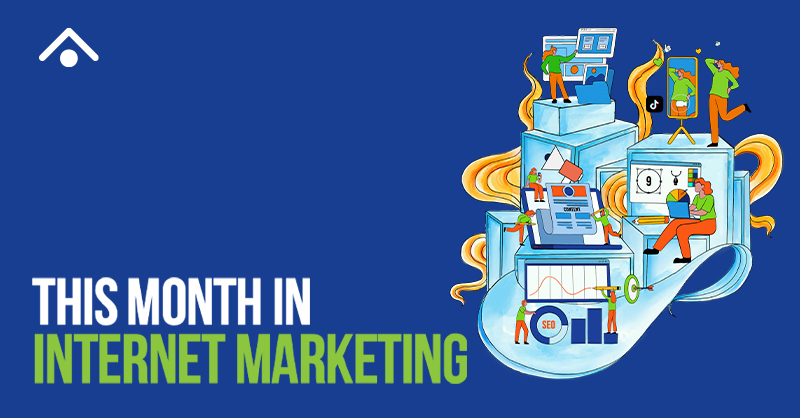Buyer personas are a great tool for helping marketers fully understand and speak to their audience. They are beneficial for pretty much every department from sales to marketing to product design and even web design. Understanding your target audience is the essential key to creating great content and products, effective sales follow up, customer retention, and efficient marketing strategies.

Also on TechWyse
Demographic Overlap Targeting with Facebook Ads
Tweaks Word Getting Right For Your Retargeting Campaign
Buyer personas are not difficult to put together, they just require you to ask the right questions. Hubspot has even put together a free template to help companies get started creating their own buyer personas.
Interviewees
The first thing you will need to do is find some people that match your target audience to interview. You will want to gather as much information as possible about your audience including what drives them.
Customers are a great place to start as they are already familiar with your company and have purchased from you. Don’t just contact the happy customers; as nice as it may be to have your interviewees sing your praises, you will want a balanced perspective on which to base your persona and unhappy customers can provide some very helpful insight on how to improve your services or products.
Past customers often do not require incentives in order to cooperate as they are happy to offer their opinion to a company they have purchased from that genuinely values their input. Consumers like to have an impact on the products they use, even if it is an almost immeasurable one.
Prospects can also be a good place to find interviewees. You will want to balance your customers with people who do not know as much about your company and products. With the contact information and basic profile that you have collected about your prospects, it should be easy to find a few that seem to match your target. The interview process may help to convert some leads as it demonstrates that you care about their opinion and are committed to providing the right solution for their needs. The one drawback is that prospects will often require an incentive of some kind to participate.
Once you have tapped those two sources you will also want to seek out a few referrals, especially if your business is trying to break into a new market. Use your social network and let your employees, friends, and family know what you are looking for. While you are unlikely to get many interviews this way, the ones you do get will likely be quite helpful.
If you are still looking for a few more interviewees, you may want to try some third party networks such as craigslist or usertesting.com. When you are able to accurately predict the answers that your interviewees will provide, you have interviewed enough people to begin creating your persona.
Your buyer persona will be used by virtually every department so you will want to include a wealth of information including:
-
Background information such as:
-
basic details about the personas role
-
any relevant company information
-
relevant profile information like education and hobbies
-
-
Demographics:
-
Gender
-
Age range
-
Household income
-
Urbanicity
-
-
Identifiers:
-
buzz words and specific mannerisms common to your target audience
-
-
Goals:
-
The best way to solve your prospect’s goals is by having a clear idea of what they are. Identify the primary and secondary goals for your persona.
-
-
Challenges
-
What challenges need to be overcome to satisfy your prospects’ goals? Identify any current or potential problems.
-
-
Solutions:
-
How can we help? What can we do to solve the challenges presented? How can we help them achieve their goals?
-
-
Common objections:
-
This can be especially helpful for the sales team as consumers will have great confidence in a company that is able to answer all of their questions and speak to all of their concerns with ease. Prepare your sales team with solutions to the most common issues.
-
-
Marketing message:
-
What is the best way to describe our solution to our customers? What are they looking for? What do they think they are looking for?
-
-
Coherent elevator pitch:
-
Keep your message simple and consistent across all departments to avoid confusion or frustration. If your tech support team seems to be contradicting your sales team it will not inspire consumer confidence.
-
The best way to speak effectively to your customers is to get in their heads. Learn the details of what they want and what motivates them to purchase and your conversion rates are bound to increase.






on
Thank for you writing this great post! Do you think that by including a link to an online survey for each customer might be a good way to gain this information? Maybe you can do a random prize drawing for survey takers who participate to encourage more customers to take it!
on
Marketing is the most important part of keeping your business relevant. It is important to use Rhetorical Sensitivity to understand who your audience are, and what exactly are they looking for. I do think you must also work towards incentives for your customers who have been with you for a while to keep them from leaving.
on
Good tips. Any company creating/selling a product should have a good idea of who their target audience is. It is when they outsource marketing work to external agencies where this can really help.
on
Knowing the target market will definitely help the marketers on the perfect approach or marketing strategies to apply.
“Don’t just contact the happy customers…also the unhappy ones.” I agree on this. Happy customers are satisfied with you and your products, if you maintain it they’ll loyally stick to your brand. What the marketers want or their objective is an increase on sale, and satisfying a satisfied customer will not let them achieve that. Marketers should also now the perspective of the unhappy customers. Know the reasons why they’re unsatisfied, consider those, and make amendments if necessary. Once you give what they want, an increase on sale is possible.
Nice article.